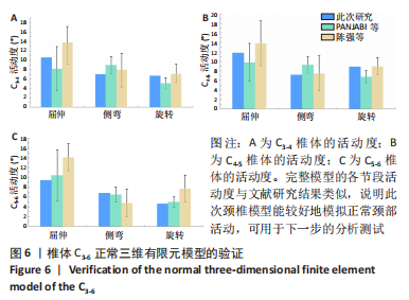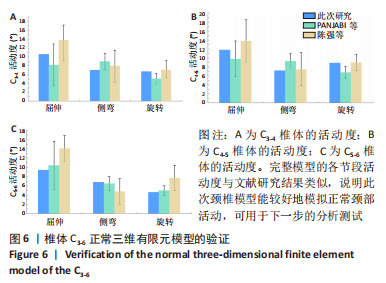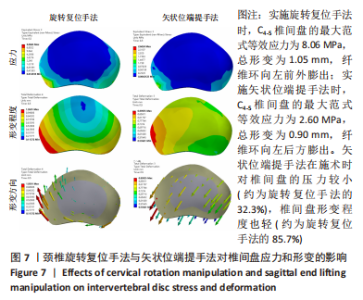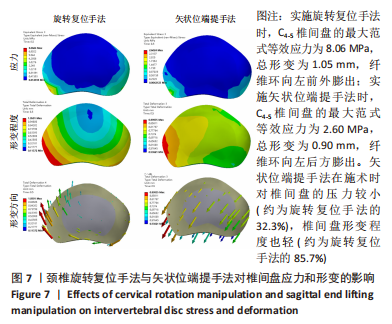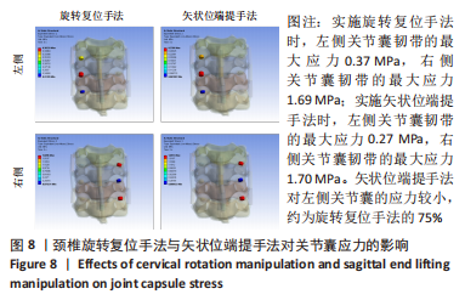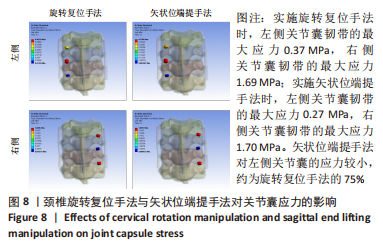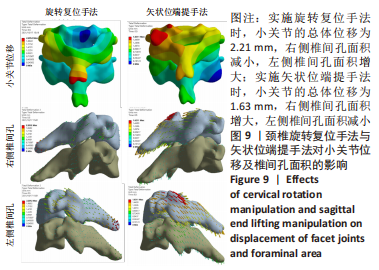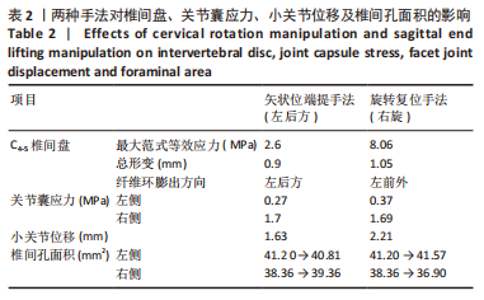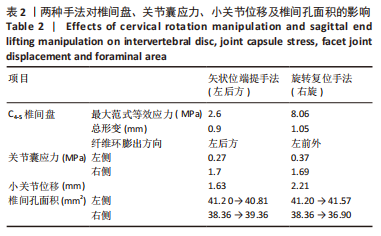[1] ABOLA MV, KNAPIK DM, HAMPARSUMIAN AA, et al. Relationship Between Foraminal Area and Degenerative Changes in the Lower Cervical Spine with Implications for C5 Nerve Root Palsy. Orthopedics. 2018;41(4):e506-e510.
[2] YILMAZ M, YUCESOY K, ERBAYRAKTAR RS, et al. Anterior hybrid construction of multilevel cervical disc disease and spondylotic spinal stenosis: surgical results and factors affecting adjacent segment problems. J Orthop Surg Res. 2021;16(1):298.
[3] KEIDAN L, BARASH A, LENZNER Z, et al. Sexual dimorphism of the posterior cervical spine muscle attachments. J Anat. 2021;239(3):589-601.
[4] ARTEMIADIS A, LIAMPAS A, HADJIGEORGIOU L, et al. Myelopathy associated with SARS-COV-2 infection: A systematic review. Neurol Res. 2021;43(8):633-641.
[5] KAMAKURA D, FUKUTAKE K, NAKAMURA K, et al. Acromegaly presenting with myelopathy due to ossification of posterior longitudinal ligament: a case report. BMC Musculoskelet Disord. 2021;22(1):353.
[6] THEODORE N. Degenerative cervical spondylosis. N Engl J Med. 2020;383(2):159-168.
[7] BINDER AI. Cervical spondylosis and neck pain. BMJ. 2007;334(7592):527-531.
[8] 程波,潘国良,董晓薇,等.刺血疗法治疗神经根型颈椎病的临床文献研究[J].陕西中医药大学学报,2017,40(4):140-144.
[9] ELMASRY SS, ASFOUR SS, TRAVASCIO F. Finite Element Study to Evaluate the Biomechanical Performance of the Spine After Augmenting Percutaneous Pedicle Screw Fixation With Kyphoplasty in the Treatment of Burst Fractures. J Biomech Eng. 2018;140(6).doi: 10.1115/1.4039174.
[10] 蔡凯文,蒋国强,卢斌,等.椎间隙骨水泥渗漏的不同分型对邻椎相邻终板应力分布的影响:三维有限元研究[J].中华骨科杂志,2019,39(6):364-373.
[11] GUAN W, SUN Y, QI X, et al. Spinal biomechanics modeling and fifinite element analysis of surgical instrument interaction. Comput Assist Surg (Abingdon). 2019; 24(sup 1): 151-159.
[12] MANICKAM PS, ROY S. The biomechanical study of cervical spine: A Finite Element Analysis. Int J Artif Organs. 2022;45(1):89-95.
[13] GANDHI AA, GROSLAND NM, KALLEMEYN NA, et al. Biomechanical Analysis of the Cervical Spine Following Disc Degeneration, Disc Fusion, and Disc Replacement: A Finite Element Study. Int J Spine Surg.2019;13(6):6066.
[14] YOGANANDAN N, KUMARESAN S, PINTAR FA. Geometric and mechanical properties of human cervical spine ligaments. J Biomech Eng. 2000;122(6):623-629.
[15] 黄学成,叶林强,梁德,等.三维有限元模型分析旋转手法中旋转方向对颈椎间盘位移和椎间孔面积的影响[J].中国组织工程研究,2018,22(3):404-408.
[16] 黄学成,叶林强,江晓兵,等.不同体位下颈椎旋转手法对颈椎间盘位移和内在应力的影响[J].中国康复理论与实践,2017,23(12):1470-1475.
[17] WU JC, HUANG WC, TSAI HW, et al. Pedicle screw loosening in dynamic stabilization: incidence, risk, and outcome in 126 patients. Neurosurg Focus. 2011;31(4):E9.
[18] 柳超,王前,张杰峰,等.不同内固定手术方式治疗寰枢椎复合骨折稳定性的有限元分析[J].中国脊柱脊髓杂志,2015,25(10):904-911.
[19] PANJABI MM, NIBU K, CHOLEWICKI J. Whiplash injuries and the potential for mechanical instability. Eur Spine J. 1998;7(6):484-492.
[20] 陈强,侯铁胜,杨国标,等.全颈椎三维有限元模型的建立[J].第二军医大学学报,2006,27(5):554-555.
[21] CHILDRESS MA, BECKER BA. Nonoperative management of cervical radiculopathy. Am Fam Physician. 2016;93(9):746-754.
[22] 张党升,薛卫国.颈椎端提法治疗神经根型颈椎病的临床研究[J].按摩与导引,2005,21(6):5-6.
[23] 耿楠,刘迪,刘卉,等.颈部端提手法对颈型颈椎病患者颈椎长度及角度影响的运动学参数分析[J].上海中医药杂志,2017,51(3):18-20+40.
[24] CYNTHIA KP, CHRISTIAN WAP, JÜRG H, et al. Symptomatic, Magnetic Resonance Imaging-Confirmed Cervical Disk Herniation Patients: A Comparative-Effectiveness Prospective Observational Study of 2 Age- and Sex-Matched Cohorts Treated With Either Imaging-Guided Indirect Cervical Nerve Root Injections or Spinal Manipulative Therapy. J Manipulative Physiol Ther. 2016;9(3):210-217.
[25] 于栋,张军清宫正骨流派源流考[J].中医正骨,2016,28(2):73-75.
[26] 王尚全,孙树椿,陈明,等.清宫正骨流派学术思想初探[J].中国中医骨伤科杂志,2017,25(9):68-70.
[27] MASARACCHIO M, KIRKER K, STATES R, et al. Thoracic spine manipulation for the management of mechanical neck pain: A systematic review and meta-analysis. PLoS One. 2019;14(2):e0211877.
[28] MALONE Q, PASSMORE S, MAIERS M. Comparing Two Moderate-to-Vigorous Physical Activity Accelerometer Cut Points in Older Adults With Neck and Back Disabilities Undergoing Exercise and Spinal Manipulation Interventions. J Aging Phys Act. 2020;28(2):255-261.
[29] 龙军.推拿结合颈椎端提法联合半夏白术天麻汤加减治疗椎动脉型颈椎病38例临床观察[J].风湿病与关节炎,2020,9(4):24-26+44.
[30] 刘建军,董万涛,宋敏,等.坐位端提旋扳手法联合盐酸氟桂利嗪胶囊口服治疗椎动脉型颈椎病55例临床观察[J].甘肃中医药大学学报,2016,33(3):77-81.
[31] 陈芳龙.推拿端提手法治疗椎动脉型颈椎病疗效观察[J].浙江中医杂志,2009, 44(5):362-363.
[32] 郑勇,刘培俊,周勇.端提法推拿治疗颈椎间盘突出症148例[J].中国临床医生,2005,33(2):45-46.
[33] 朱俊琛,苏国宏,孙奎,等.颈椎端提法治疗神经根型颈椎病62例[J].安徽中医学院学报,2007,26(3):6-7.
[34] 邓真,王玉鹏,赵璐璐,等.颈椎病患者项韧带钙化与颈椎曲度的相关性分析[J].中国中医骨伤科杂志,2023,31(1):19-24.
[35] 曹盛楠,师彬,孙国栋.神经根型颈椎病C3~C7三维有限元模型的建立与意义[J].山东医药,2018,58(32):5-8.
|
